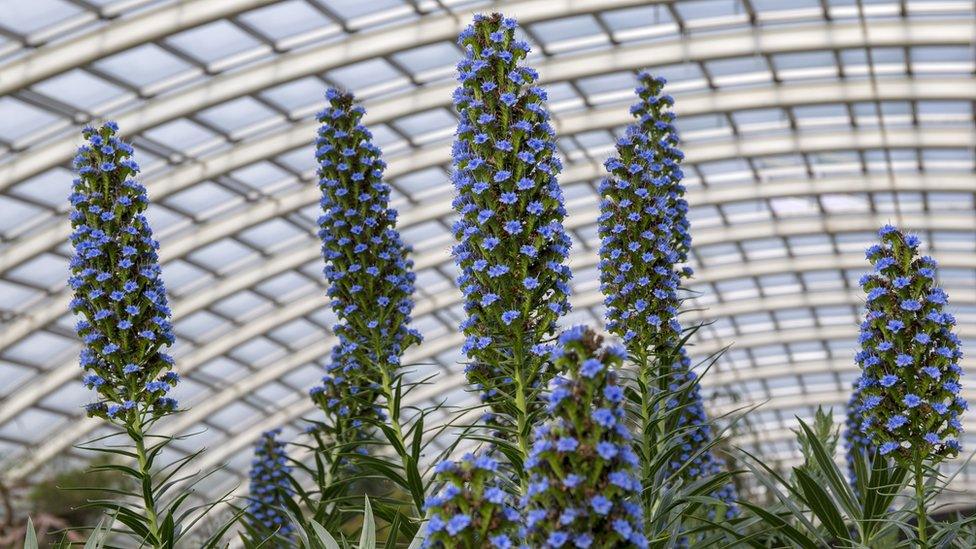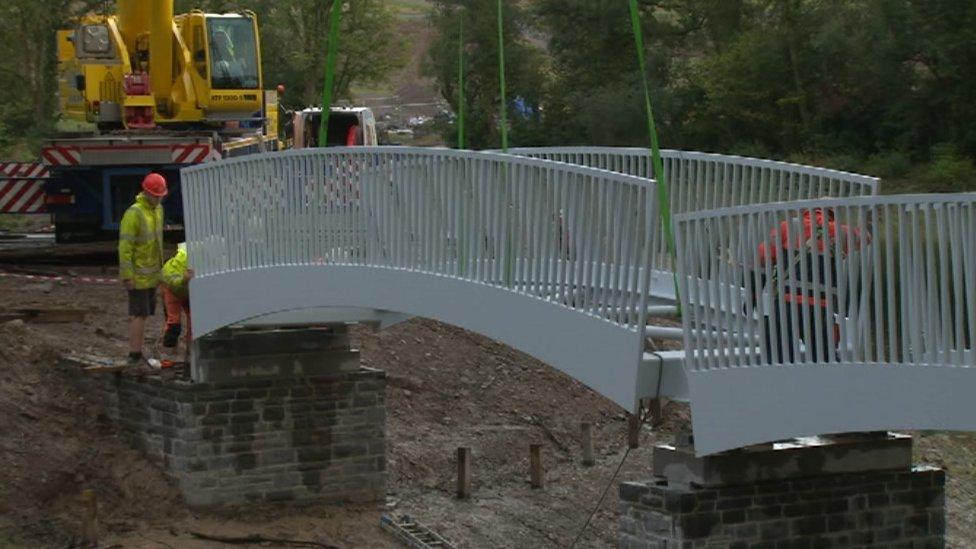National Botanic Gardens of Wales is blooming at 20
- Published
As the National Botanic Garden of Wales celebrates 20 years - we look at how it has grown
From bailouts to blooming marvellous - the National Botanic Garden of Wales is celebrating its 20th birthday.
Along the way, vital lessons have been learned, especially in the last decade, says its chairman of the trustees.
Marking the birthday milestone, Gary Davies said without turning the garden's fortunes around "180 degrees", it would not have weathered the coronavirus pandemic.
But lockdown means a party to mark its anniversary remains on hold.
"There's no doubt about it, in the early days we made some fundamental mistakes," said Mr Davies.
"As we were a novelty, in our first year we attracted 240,000 visitors, and we planned on the assumption that this would continue forever.
"We overstretched ourselves and nearly paid the price."
Built at a cost of £43m, the 568-acre garden opened its doors in May 2000.
But after the initial success, visitor figures slumped below 100,000 a year.
Twice the garden at Llanarthne in Carmarthenshire needed saving from financial ruin, with emergency grants from the Welsh Government and the county council.
Last year, there was a "sustainable average" of 160,000 people who went through its gates.

The garden has worked hard to attract a new - and younger - audience
In 2010 just a quarter of the income was self-generated, and three-quarters came from grants. Today the reverse is true.
"In the early 2000s the gardens were very immature, and frankly a little underwhelming," admitted Mr Davies.
"It's taken 20 years for them to reach their full splendour."
The garden team has also worked hard to develop what is on offer - especially for a younger audience.
It includes a butterfly house, play areas, and even zorbing - where thrill-seekers can whizz along inside a giant balls.
"I was told by one parent that their child used to cry when they were told they were going to the Botanic Gardens for a day out, now they cry when they have to come away," added Mr Davies, who is also acting head of the garden.
The focus on education and science at the establishment has also stood the garden in a good position to survive the coronavirus pandemic.
They have been able to offer ecology lessons online, and help with teaching about living more sustainable lives.
A seed bank at the site now holds over two million specimens of vulnerable plant species.

Protecting plant species is one of the vital roles played by the garden
Staff have also played a key role in preserving 270 plant species threatened by Australian wildfires earlier this year.
"More and more we're considered to be a global centre of excellence for botany, and are part of a network of institutions caring for the world's most at-risk flora, whether because of climate change or loss of habitat," said Mr Davies.
But like other attractions in Wales, it remains closed to visitors at the moment.
"If there's any silver lining to all of this, at least it didn't happen 10 years ago when we were in an utter financial mess," added the chairman.
"We've been able to keep on some staff and volunteers, caring for the gardens under appropriate distancing measures, and the irony is that they've never looked better."
Mr Davies stressed that once they can reopen, they must play their part in the wider recovery.
"After this is all over we need to help all the hotels, pubs and small businesses who have helped us over the years.
"Not everyone is going to be as lucky as us, but we'll do whatever we can to assist.
"We may have missed celebrating our 20th anniversary, but I've promised everyone a bumper 21st birthday party, when we'll be welcoming back all our friends, and most certainly offering them the key to the door."
- Published26 August 2019

- Published12 April 2018

- Published1 March 2017
